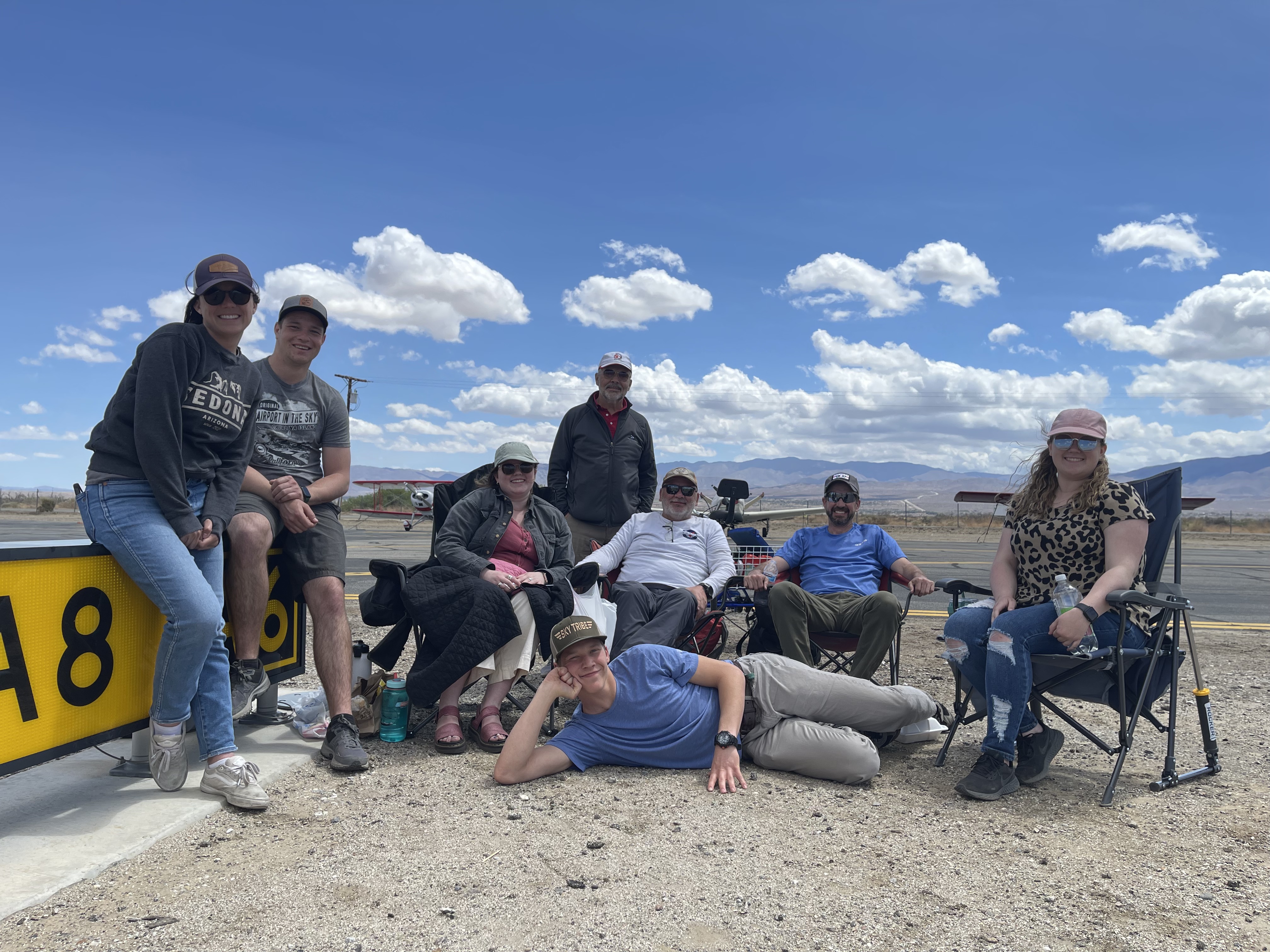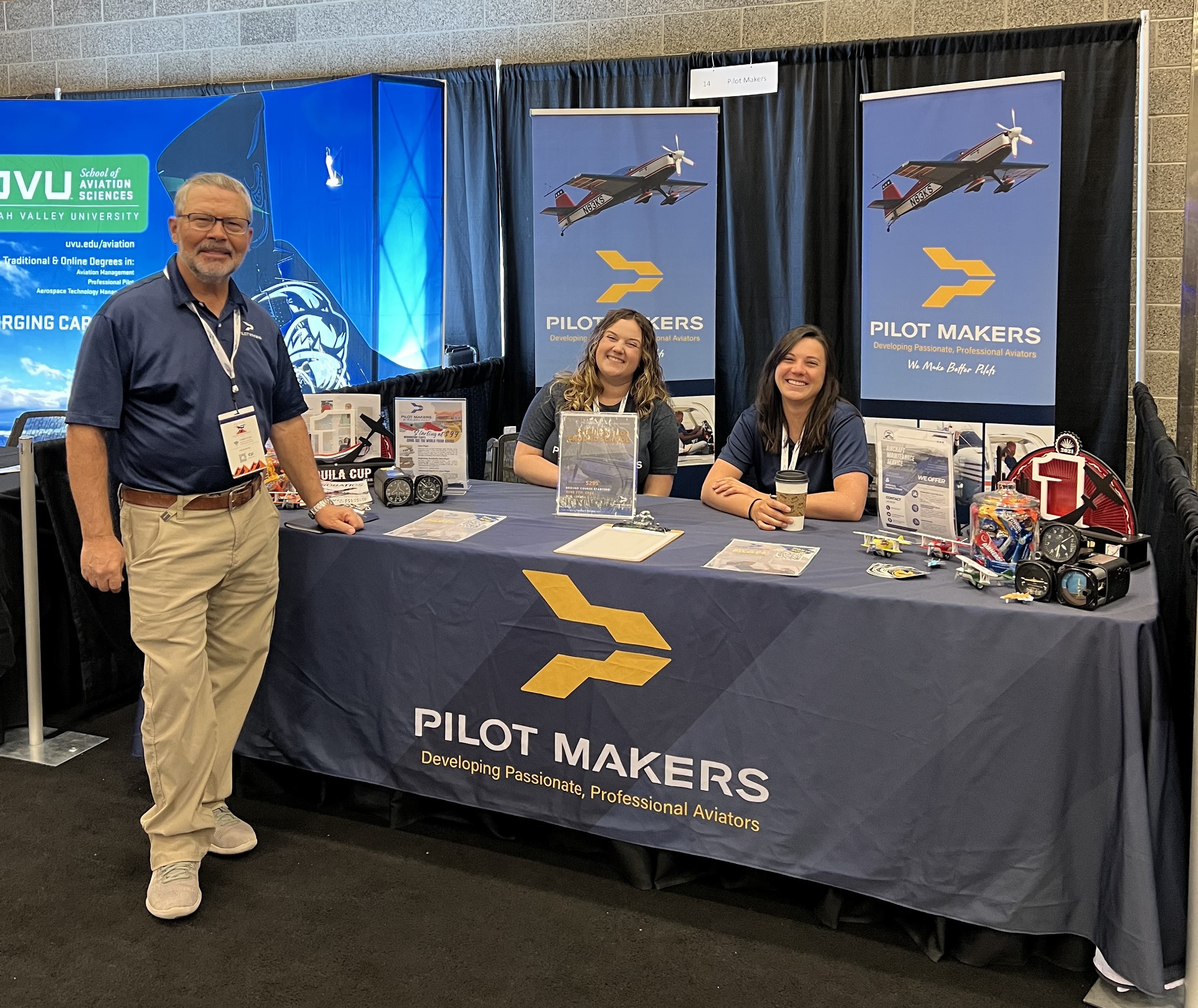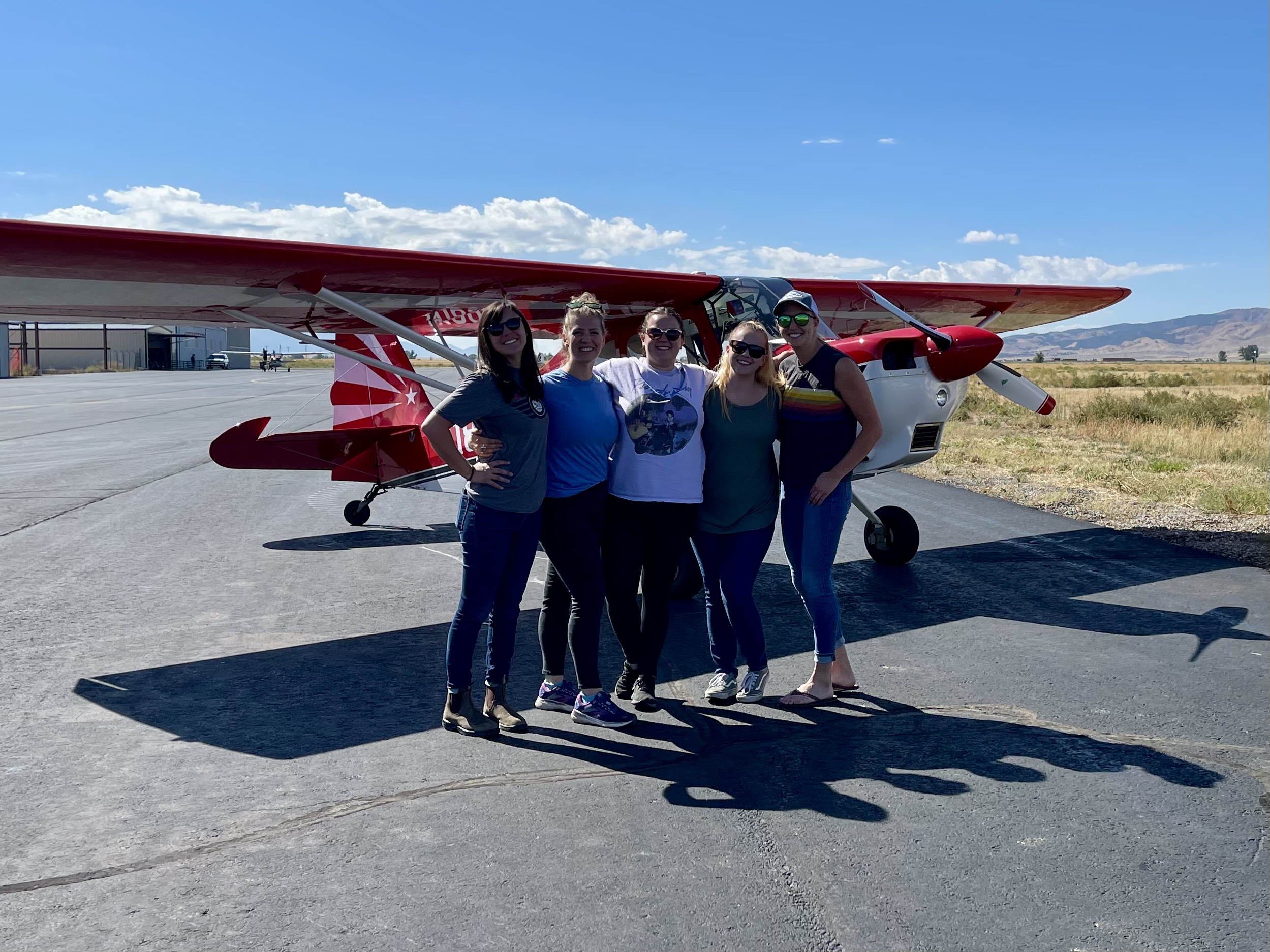A New Chapter for Utah
By, Jeff Granger, IAC 19907
Last year I wrote about the Pilot Makers Advanced Flight Academy and our trip to the Tequila Cup in Marana, Arizona, our first trip together as a team. It was evident to me on our return from the contest that there was a growing group of people in the Wasatch Front interested in competition aerobatics. The flight school had organized these participants and provided the competition aircraft up to that point. But it was also clear that to make progress with building our group of competitors that an IAC chapter was needed.


So why start a chapter? What can a chapter do that an aerobatic team organized by a flight school cannot do? How do they work together and promote each other? First, there are things that a flight school can do that a chapter is prohibited from doing or would do with difficulty. A chapter can’t own and operate an aircraft. The flight school or FBO can provide rental aircraft and has hangars, maintenance, classrooms, and meeting facilities. The chapter might acquire a facility eventually but at least initially has little or nothing.
A chapter has its own governance, budget and bank accounts separate from the flight school. It can do activities and fundraising which are not necessarily within the scope of operations or interest of the flight school. It can recruit members who have their own aircraft and are not necessarily customers of the flight school. Basically, they can go their own way.
EAA provided a list of approved chapter activities including fly-ins and fly-outs, education sessions, newsletters and websites, community outreach and social events, fundraisers, aircraft building and restoration, and chapter practice days. We had already been practicing together informally as a team. A big advantage of moving up to a chapter status would be to utilize the IAC’s chapter practice day guidelines for the session from the EAA. This formalizes the event, encourages participation in the IAC and the chapter and provides no-cost liability insurance coverage.
The EAA Chapter Office in Oshkosh provided us with detailed guidance on how to start a chapter and Serena Brouillette, the chapter field representative, walked us through the process. The first question to answer was whether there were enough IAC members in the area to provide a recruiting base. EAA did a search and found 38 IAC members within 250 miles of our address in Provo which I thought would be more than adequate.
The second question was whether or not to revive one of the previous chapters in our state which had gone inactive or to start a new chapter "from scratch". We agreed with Serena’s recommendation that a clean sheet application to charter a new chapter was easier and more efficient than trying to track down the documentation on an old chapter.
We needed a place to meet. This illustrates the synergy between the flight school and the new chapter. It will be a long time, if ever before the chapter might have its own facility. The flight school wants to have chapter members as customers and so offers its classroom for meetings and allows their address to be used to receive the chapter’s mail.

The EAA application requires at least 5 members and 4 officers for a “special interest” chapter such as the IAC. It was time for our people to “step up to the plate” as volunteers. I found many were eager to serve but perhaps unsure of their abilities. As I had previously served in chapter leadership in Ohio I helped “sort out” our volunteers and encourage them to offer to serve in positions that I thought suited their skill set.
Bryce Brimhall was the natural choice for President as he had organized the Pilot Makers Aerobatic Team over the previous year and felt as I did that, we had great chapter potential. Although he had recently moved up to an airline job, he was still active with us as an aerobatic and UPRT instructor. Kendra Hart likewise had moved on to a corporate flying job but was still putting in many hours instructing aerobatics, UPRT and tailwheel. She was a natural choice for VP.
Kent Miner, a semi-retired businessman, was serving as a consultant for Pilot Makers and leasing the Citabria that was our primary training plane. He was the obvious choice for Treasurer. Sadie Talbot was instructing full time and had administrative experience at the FBO. She volunteered as Secretary.
To make a total of seven officers I came on as a “member at large” along with Erin Chitty and Lisa Draper both of whom have competition experience.
Once we had the slate of officers and a place to meet and receive correspondence the rest of the application was a snap. We did need to come up with a name for the chapter and although many clever ones were suggested we settled on “The Utah Aerobatic Club”. There is a fee for the application to cover the charter and liability insurance. This presented a dilemma as we had no bank account or funds yet. I paid the fee personally to be credited later to my lifetime membership with the new chapter. The paperwork was submitted June 6 and on June 15th we had provisional status as IAC Chapter 139.
Once we had a provisional charter, we were allowed to hold official meetings and had liability coverage. We could begin the phase 2-chapter formation process as required by EAA. To be fully chartered we needed to have a Board of Directors, to adopt chapter bylaws, to incorporate in the state as a non-profit and get a Federal EIN. We also needed a bank account which could come after the EIN as it clearly separates personal and chapter finances.


Selecting the Board was easy as we had already decided on chapter officers before making the application. At a later date we will have regular elections.
Bylaws were straightforward as well. When I was with IAC 34 in Ohio, we had revised our bylaws in 2006. EAA also provides a set of model bylaws. In the end I modified the IAC 34 bylaws for our use and at the first meeting of our new Board of Directors they were adopted.
Kent Miner arranged for the incorporation as a non-profit and the Federal EIN and bank account. Lisa Draper developed a provisional website.
On November 1st we received full chapter status and November 17-20 we attended the Tequila Cup in Marana Arizona as a chapter.
The next step is to start having regular meetings, develop a calendar of events for 2023 and get the website set up with a membership enrollment portal. I have offered to teach a Judges School in the spring to kick off the season. Bryce hopes to promote the achievement awards program from the IAC throughout the 2023 season. Many of our members are eager to continue competing, better their scores, and bring home more “clinkies”.
We are looking forward to gathering local members and growing the sport of aerobatics in the Utah valley.
Follow IAC Chapter 139 on their Facebook Page: https://www.facebook.com/groups/405049384957292

